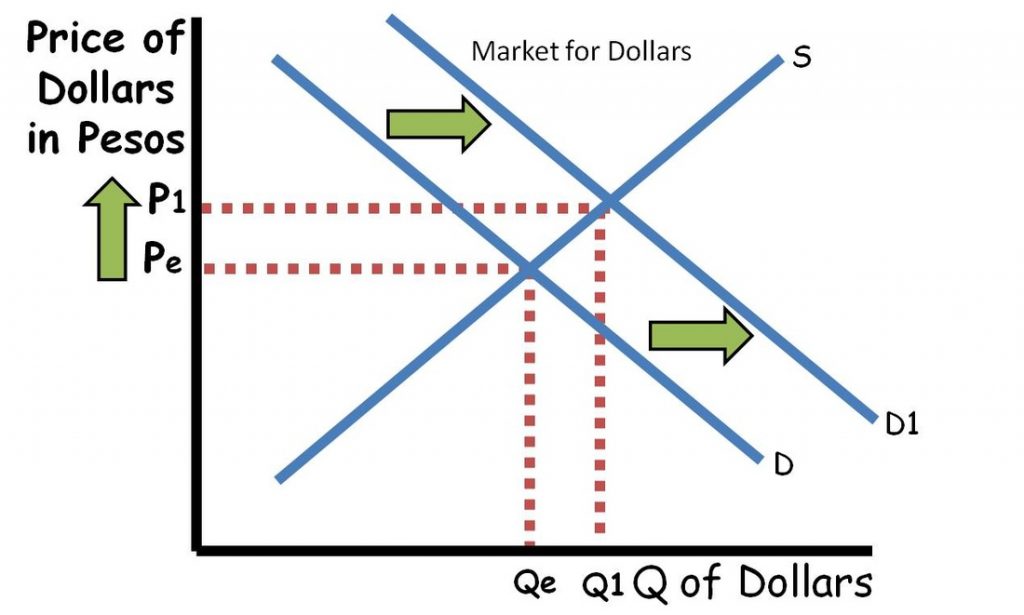Macro Unit 19
Published:
[Unit 19] Balance of Trade
\[\boxed{\text{Balance of Trade} = X_n = \text{Exports} - \text{Imports}}\](书 P351)A nation’s balance of trade is equal to its exports minus its imports. Earlier we called this figure net exports.
- 若 $\text{Balance of Trade} > 0$,则称为 Trade surplus,即顺差。
- (PPT 19.1 Page 6)$\boxed{\text{Amount of Trade Surplus} = NCO}$
- 若 $\text{Balance of Trade} < 0$,则称为 Trade deficit,即逆差。
- 同理 $\boxed{\text{Amount of Trade Surplus} = NCI}$
- (Katie 课)同理还有 Balance of Services。
[Unit 19] Trade Restrictions
(PPT 19.1)
Arguments for Trade Restrictions
- Promote domestic employment
- Protect domestic infant industry
- Diversity of production
- Prevent Dumping (反倾销)
Instituting Trade Restrictions:
- Import Quota
- Import Tariff
- Other restrictions: i.e. Licensing
[Unit 19] Balance of Payments
(Khan Academy)Balance of Payments is a record of all funds going in and out of a country.
- 在这一段中的 Credit 和 Debit 分别指增和减。
- Surplus 代表正,Deficit 代表负。
CA (Current Account)
(PPT 19.1)
- CA 包含以下部分:
- Balance of Trade
- Balance of Services
- Investment Income
- Net Transfers
- Donations
- Aids
- Grant
- (Deepseek)政府或国际组织提供的 无偿资金支持,通常用于特定项目(如教育、环保)。
- e.g. 研究经费
- Remittance
- (Deepseek)移民工人向母国家属汇款的私人资金转移,属于非官方转移支付。
- PPT 上还强调,Debt Forgiveness 也被包含在 CA 中。
- CA 增加,意味着出口增加。
CFA (Capital and Financial Account)
(PPT 19.1)
- (Katie 课)CFA 包含以下部分:
- Investment
- Securities
- CFA 增加,意味着 Capital Inflow。
Balance of Payments
\[\boxed{\text{Balance of Payments} = CA + CFA = 0}\]- 因此,CA Surplus $\iff$ CFA Deficit。
[Unit 19] Exchange Rate
Foreign Exchange Graph
假设 $A$ 是本国的货币,$B$ 是另外一国的货币。
(书 P358)横轴是 Quantity of $A$,纵轴是 Price of $A$ in $B$。
S 是一条斜向上的曲线,D 是一条斜向下的曲线。
Google 上找到的一张比较标准的图:

- Price of $A$ in $B$ 其实想表达的就是 $A$ 的 Exchange Rate。
- 升值叫做 Appreciate,贬值叫做 Depreciate。
- (2019 FRQ #1 (e))遇到题目问 “How will the international value of the country’s currency change?” 的时候,不能回答 increase / decrease,要回答 appreciate / depreciate。
Related with other quantities
以下式子中 $S$ 和 $D$ 都是指 Forex 中的。
\[\text{Int Rate} \uparrow \implies S \downarrow D \uparrow \implies \text{Ex Rate} \uparrow\] \[PL \uparrow \implies X_n \downarrow \implies S \uparrow D \downarrow \implies \text{Ex Rate} \downarrow\] \[AD \uparrow \implies \text{Real Income} \uparrow PL \uparrow \implies \text{Import} \uparrow \text{Export} \downarrow \implies S \uparrow D \downarrow \implies \text{Ex Rate} \downarrow\] \[\text{Real Income} \uparrow \implies \text{Import} \uparrow \implies S \uparrow \implies \text{Ex Rate} \downarrow\]Benefit of Depreciation:
\[\text{Ex Rate} \downarrow \implies \text{Price of Export Goods} \downarrow \implies \text{Export} \uparrow \implies X_n \uparrow \implies AD \uparrow\]Some facts
- (书 P359)目前用于确定国际汇率的系统叫做 managed float。
Example
US 从 Japan 那里买了 $1000B 的东西;Japan 从 US 那里买了 $300B 的东西。
- Japan 的 CA 有 $700B Surplus;US 的 CA 有 $700B Deficit
- Japan 的 Balance of Trade 即 Net Exports 为 $700B,因此存在 Trade Surplus;US 的 Balance of Trade 即 Net Exports 为 $-700B,因此存在 Trade Deficit
- 在 Japan 购买 US 的 Securities 等方式弥补之后,US 的 CFA 将出现 $700B 的 Surplus。
- 对于 US 来说,Supply of $ 上升,Demand for $ 下降,贬值;对于 Japan 来说,Supply of ¥ 下降,Demand for ¥ 上升,升值。